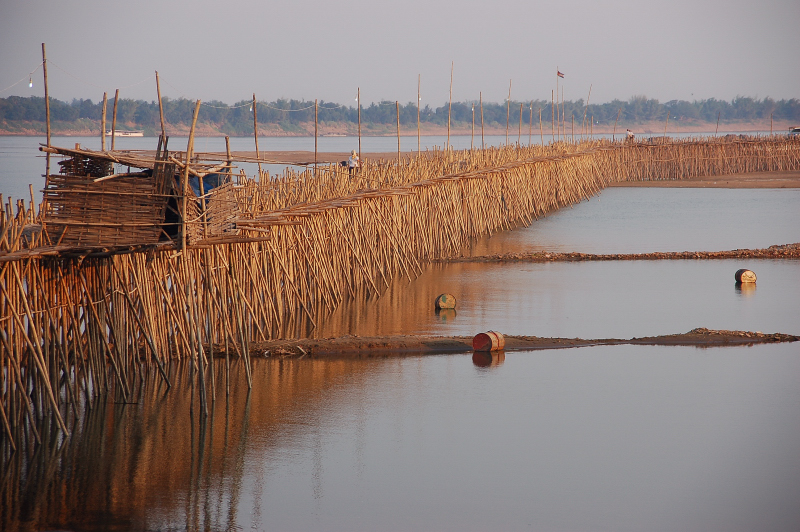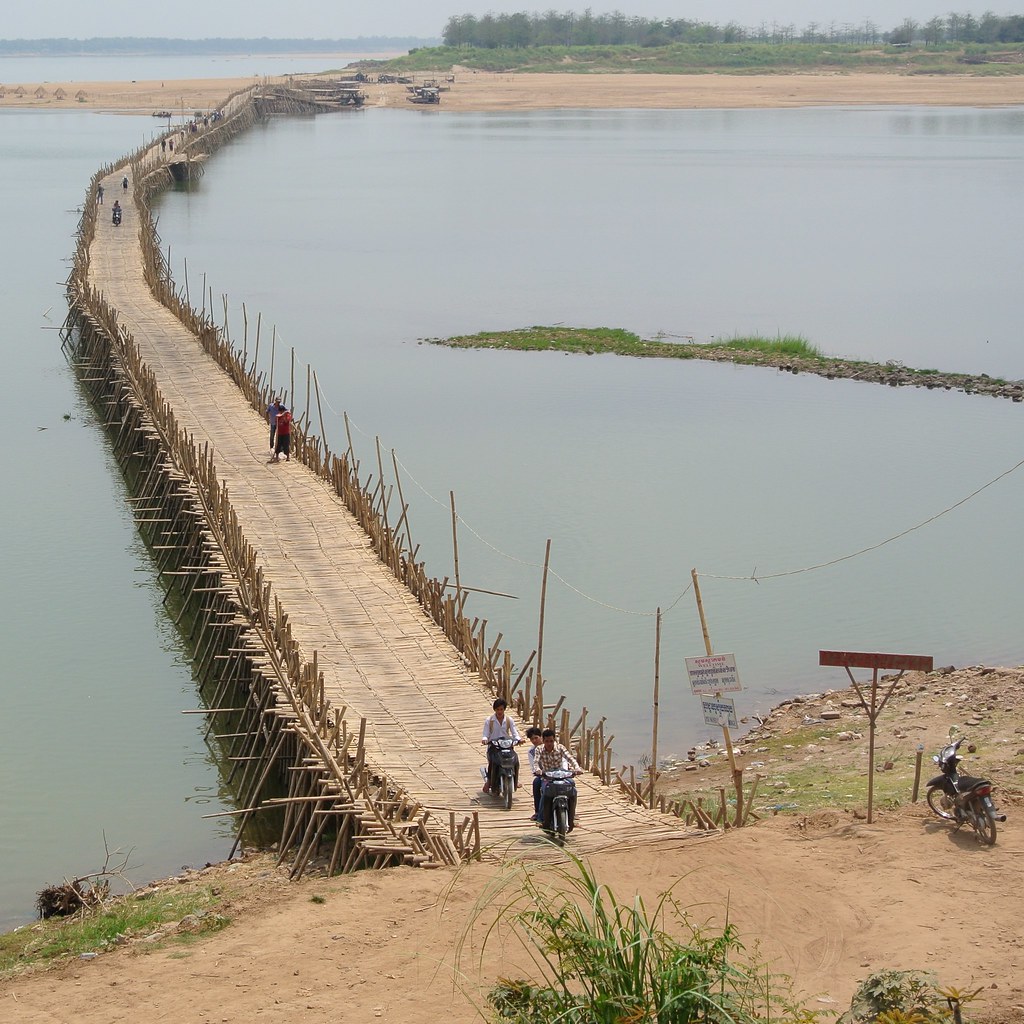This bamboo bridge is seasonal: it’s built every dry season when the waters of the Mekong River recede and become too shallow for ferry. Then at the start of each rainy season, before the rivers swell, the bridge is dismantled by hand and the bamboos stored away or reused for other constructions. This is done because during the wet season the river currents become too strong for the bridge to survive. Boats then ferry people across the river instead.
Once the waters have receded low enough and currents have subdued, construction on a new bridge commences. First, tall bamboo poles are rammed into the riverbed and a layer of split bamboo matting is laid on top to make the surface. More poles at different angles brace the foundation. The bridge is strong and wide enough to support the weight of light vehicles, but from afar it looks like a matchstick model.
 Because bamboos bend rather than break when under pressure, driving a car or motorbike over the bridge causes the bamboos to continually flex and bounce giving riders the experience of riding a wave, accompanied by the percussive and deafening rattling of the deck under the tires.
Because bamboos bend rather than break when under pressure, driving a car or motorbike over the bridge causes the bamboos to continually flex and bounce giving riders the experience of riding a wave, accompanied by the percussive and deafening rattling of the deck under the tires.
Yet, thousands of tourists come to Kampong Cham each year to make the adrenalin fueled crossing. Locals are charged 100 riel, or about 2.5 cents, to use the bridge but foreign tourists are charged forty times more, as is customary in these parts of the world. Tolls bring in 1 to 2 million riel per day, or about $250 to $500, the lion’s share of which is borne by foreigners. The revenue collected goes towards the bridge’s construction and maintenance which requires about $50,000 to $60,000 a year.
 Currently, there is a concrete bridge built two kilometers from this bamboo bridge with a load of up to 30 tons, much more than the 4 tons load of the bridge. People mainly move on the concrete bridge after it was built and now the bamboo bridge is mainly used for tourism.
Currently, there is a concrete bridge built two kilometers from this bamboo bridge with a load of up to 30 tons, much more than the 4 tons load of the bridge. People mainly move on the concrete bridge after it was built and now the bamboo bridge is mainly used for tourism.
According to amusingplanet.com














